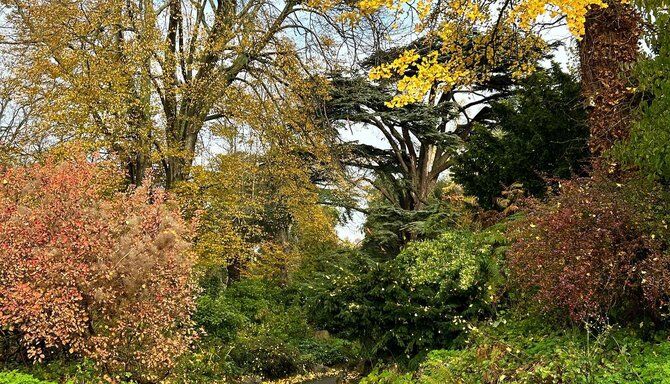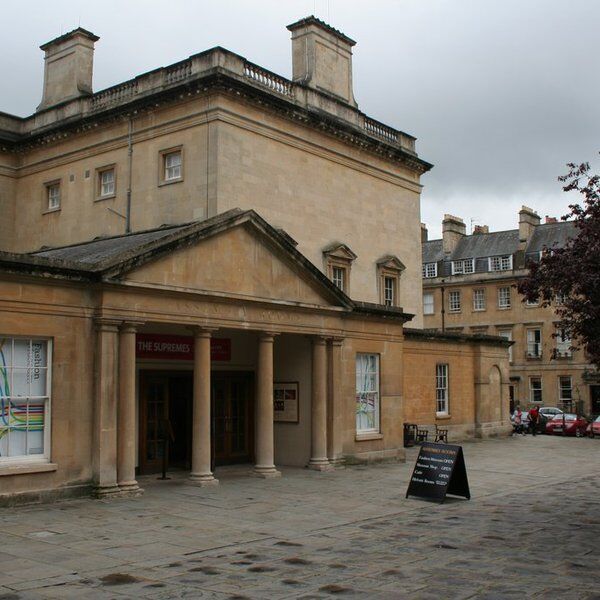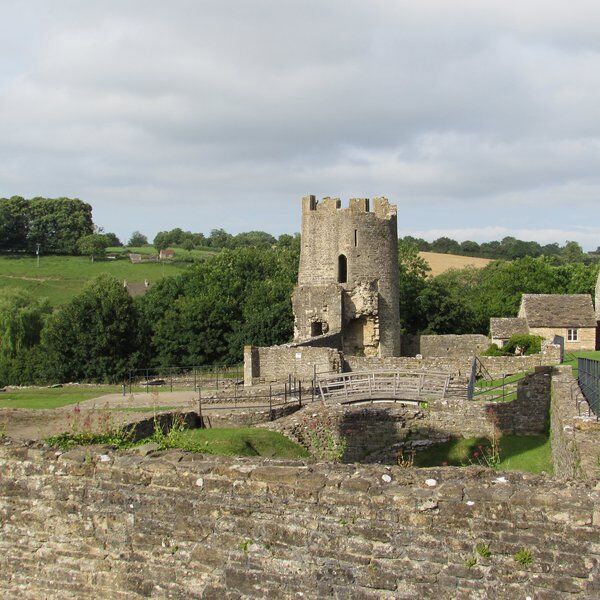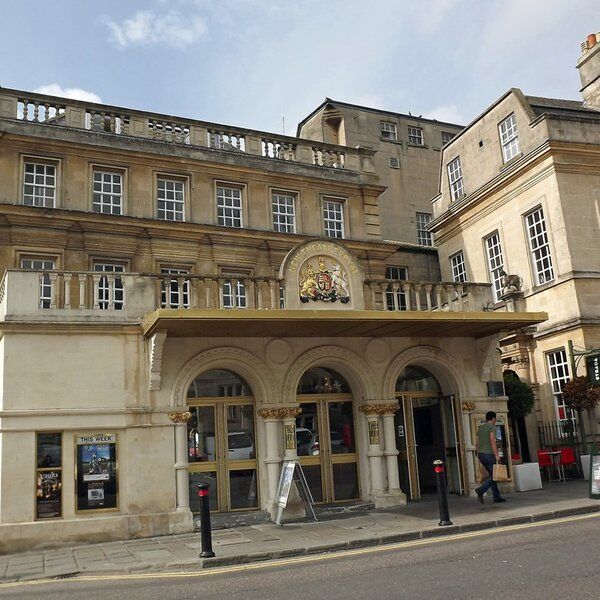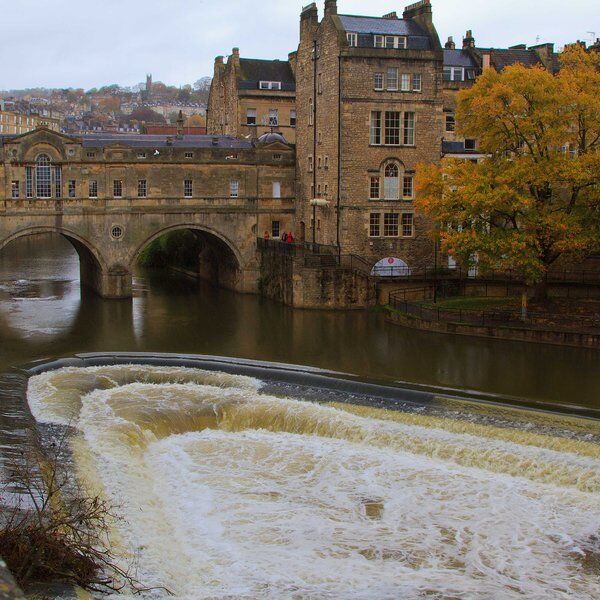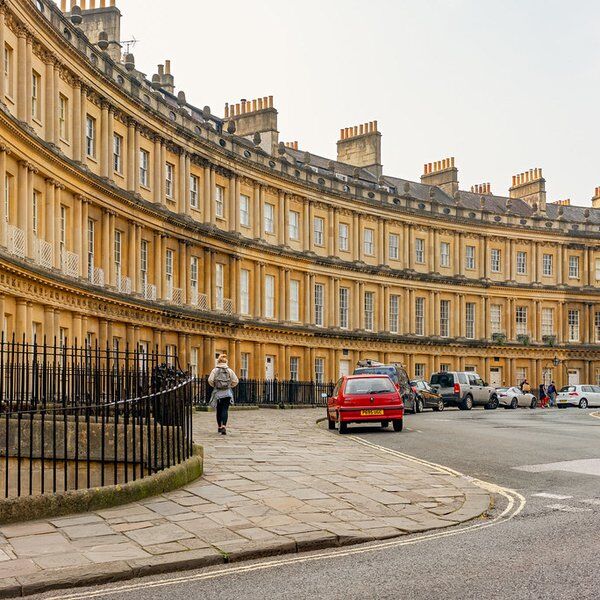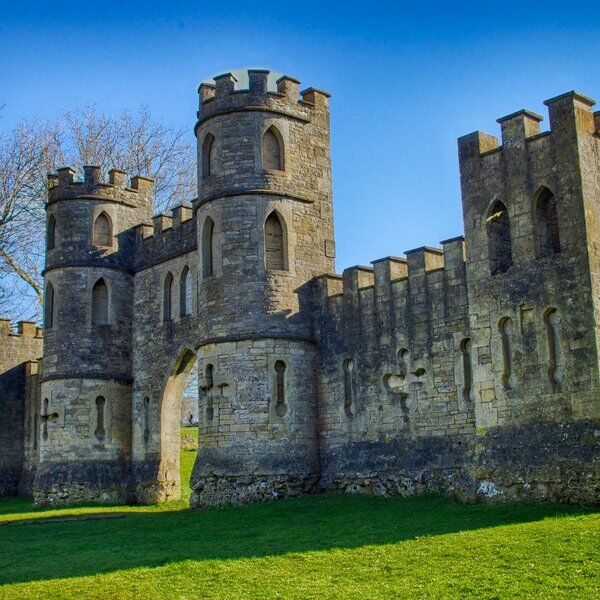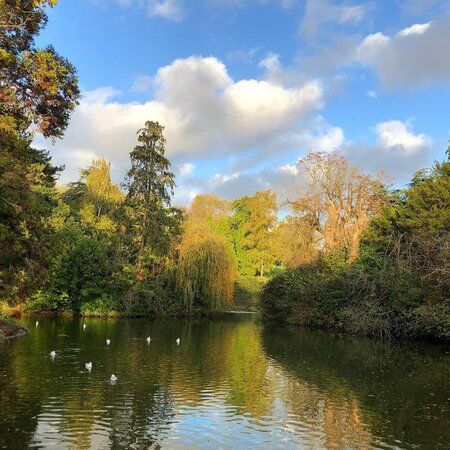
Discover Royal Victoria Park
Residing on the north-west side of Bath, Royal Victoria Park is a gently-sloping, south-facing haven of wildflower meadows, peaceful duckponds, and stretching greenery. It was opened in 1830 by 11-year-old Princess Victoria, seven years before her ascension to the throne.
The 57-acre park has been the recipient of a Green Flag award and has been Grade I listed on the National Register of Historic Parks and Gardens. It is overlooked by the Royal Crescent and has many attractions.
Up until 1921, the Royal Victoria Park was run privately as part of the Victorian public park movement. Ever since, it has been managed by the Bath Corporation.
Entering Royal Victoria Park
Royal Victoria Park can be accessed from many different entrances. The main (and best) entrance however is via Rivers Gate. This entrance, marked by two stone gate piers topped with lions, lies off Queen’s Parade in the far eastern corner of the park.
These lions were replaced as part of a 2007 renovation project partly funded by the Heritage Lottery Fund, which restored them to their original bronze colour and added a gilt ball under each lion’s front paw.
From Rivers Gate it is possible to follow Royal Avenue in a circular walk around the perimeter, taking slight detours here and there to visit the park’s many features.
Additional renovations in 2007 saw the replacement of the decorative iron gates at the three main park entrances. The original gates and the perimeter railing, which was also replaced, were removed as part of a WWII national scrap metal campaign.
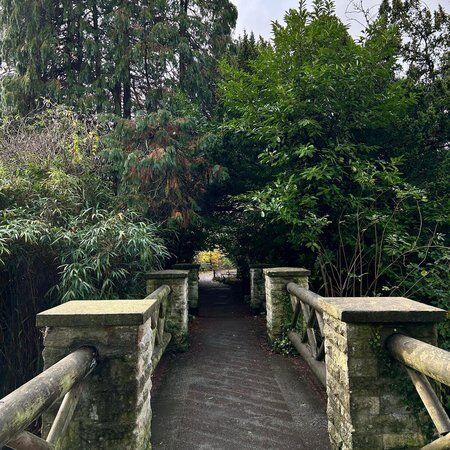
Inside Royal Victoria Park
Within the park, there are beautiful views towards Royal Crescent in the north and a scenic hilly landscape rolling away to the south.
Beneath the Royal Crescent hot-air balloons take flight after 6pm in an impressive summertime spectacle. There is also a 9-acre Botanical Garden, a crazy golf course, a bowling green, tennis courts, a children’s play area, and a small cafe.
The main body of the park, situated beyond the Victoria Column, is an expanse of green openness with ample picnic and field game opportunities such as rounders, football, and cricket. This area is divided by three diagonally positioned, tree-lined pathways.
A carriage drive winds its way through dense areas of ancient trees at the park’s perimeter and passes west toward the oddly shaped lake, the Botanic Gardens, and the Dells.
On Autumnal walks these trees are flecked with gold leaves and during winter strolls, be sure to look out for the outdoor ice-rink.
Victoria’s Column
One of the park’s key features is a stone obelisk erected in 1837 to commemorate Queen Victoria’s 18th birthday. The monolithic structure, known as Victoria Column, has three lions at its base and railings all around. The area is also surrounded by Park Cottages.
Milner’s Lake at Royal Victoria Park
The lake was constructed in 1878-9 by Edward Milner, replacing a previous water feature. On a small island in the lake lies the Victoria Vase, placed there in 1880 to mark the park’s 50th anniversary.
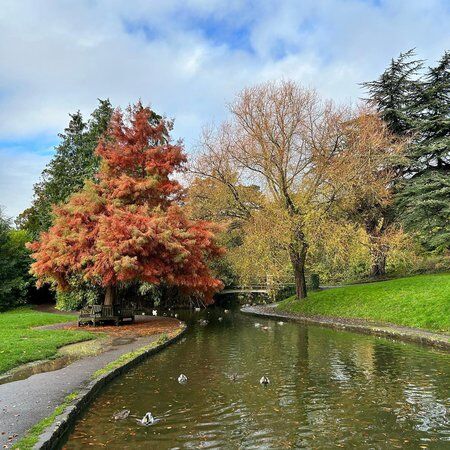
The Botanic Gardens
One particular detour from the perimeter drive, allows access to the Botanic Gardens, which span 9 acres in the north-western area of the park.
The Botanic Gardens, formed in 1887, features a series of scent-filled paths that wind around a fine collection of plants, trees, and flower borders. There is also a rock garden, large pond, several small bridges, a sundial, and an imitation of a Roman Temple.
Wildlife plays an important part in the Botanic Gardens as the exhibit bustles with birds, insects, fish, and butterflies. Multiple benches dotted around allow visitors to sit quietly and delight in the various different fauna and flora aspects of the Gardens.
The Great Dell
To mark its centenary in 1987, the Botanic Gardens were extended to include the Great Dell, a disused, wooded quarry. The Great Dell was formerly part of Royal Victoria Park and already had an unusual collection of trees, including some North American conifers.
Today the Great Dell is a beautiful woodland garden with an aerial walkway, and is home to two important statues. ‘Shakespeare’s Monument’ was erected in 1864 to commemorate 300 years since Shakespeare’s birth; and ‘Jupiter’s Head’, already present in 1839, stands on a tall ashlar pedestal.

Interested in finding more places like this? Try one of our Treasure Hunts In Bath - untangle cryptic clues as a team, as you are taken on a journey to the most unique, unusual and bizarre corners of England.
